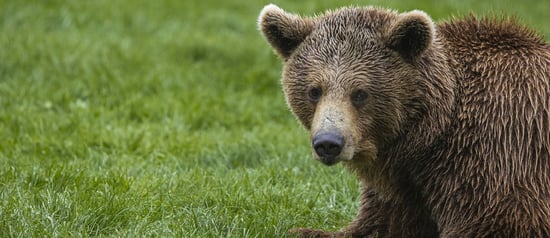
Where to spot Australian animals in the wild
News
No matter how well they are looked after in captivity, a wild animal's needs can only be fully met in their wild environment. See wild animals in the wild! There’s no more special or exciting way to see them.
Top image: NOMADasaurus
Queensland
Koalas in Noosa National Park:
Koala numbers have declined sharply in past decades but, luckily, they’re still relatively easy to find in Noosa National Park. It’s just a short walk from the town of Noosa Heads into the park, where a blackboard at the entrance will show you where koalas have been sighted recently. Spot them munching on the leaves of the eucalyptus trees that are their home and food source. And remember not to disturb them as they need a lot of sleep.
Cassowaries at Mission Beach:
Mission Beach, between Townsville and Cairns, is home to the highest density of cassowaries in Australia. You can see them at dawn and dusk walking through fields, crossing roads and passing through resorts and locals’ gardens around Mission Beach. Be careful in cassowary territory – they can be dangerous. In addition to not approaching cassowaries or their chicks, never stop your car on the road to look at them. It’s also dangerous and illegal to feed cassowaries.
Whales and dolphins at Hervey Bay:
Australia's premier whale and dolphin watching destination, Hervey Bay is widely regarded as the best place to watch humpback whales in the world. It was the world's first destination to be awarded Whale Heritage Site status by the World Cetacean Alliance.
Koalas in Toohey Forest Park in Brisbane:
Toohey Forest is a wildlife oasis 10 kilometres south of the Brisbane CBD. Not only is the 260 hectare park home to koalas but also short-beaked echidnas, lace monitors and more than 75 species of birds.
Dingoes on Fraser Island:
Fraser Island off the coast of Queensland has some of the purest dingoes in eastern Australia and is probably the best place to see a dingo in the wild. There are between 25 and 30 dingo families on the island. It’s important to follow the safety precautions, such as locking away all food items, keeping children close by you and cleaning up your rubbish. When watching dingoes, stay a safe distance away and avoid making loud noises.
New South Wales
Kangaroos at Murramarang National Park:
Kangaroos are fairly common to see. But if you want to see a large population in a picturesque location, Pebbly Beach on the south coast of New South Wales is the place to go. The eastern grey kangaroos who live here are quite happy to be admired and photographed from a distance.
Platypuses at Bombala in the Monaro Region:
The Bombala Platypus Reserve, provides a raised platform makes it easier to see the platypuses down below when they emerge in the early morning and late afternoon. Platypuses can stay underwater for up to 14 minutes – so be patient and quiet as you watch. You can also take the Bombala River Walk, which follows the river through Bombala and has a few good platypus viewing spots along the way.
Wombats in Kangaroo Valley:
Just two hours south of Sydney, Bendeela in Kangaroo Valley is the ideal place to see wombats. Set up camp at the Bendeela Recreation Area and wait for dusk, when the wombats – nocturnal creatures – are known to come out from their burrows and graze on the grass of the campground. Make sure to be as quiet as possible and keep your distance so as not to frighten them.
Western Australia
Emus at Exmouth:
The gateway to Ningaloo Reef is also known for its friendly emu population. The birds can be seen wandering the streets and walking through the town centre, as well as along the road between Exmouth and Coral Bay. Look out for them when driving and give them right of way. As with any wild animal, show them respect and do not feed them.
Quokkas on Rottnest Island:
This small and cute type of wallaby native to Rottnest Island off the coast of Perth. Between 10,000 and 12,000 quokkas live on the island, so you have a good chance to see them. Visit in early spring and you could even see joeys!
Tasmania
Pademelons in Freycinet National Park:
The trails and campsites through the park and around Wineglass Bay are famous for wildlife including small and stocky pademelons and wallabies. Remember to keep an eye on the water for dolphins, seals and migrating whales as well.
Fairy penguins at The Neck in Bruny Island:
Fairy penguins also called little penguins are the smallest penguin species in the world. No visit to Bruny is complete without a stop at The Neck and there are boardwalks and viewing platforms to let you see the penguins without disturbing them. The penguins can be found returning to their burrows in the sand dunes at dusk every day, with the best viewing from September to February.
Tasmanian Devils at The Tarkine:
Tasmanian Devils are not easy to spot in the wild. The Tarkine is a huge reserve in northwest Tasmania with an incredibly diverse landscape of rainforest, sand dunes and coastal heathland. It is home to a wide range of wildlife, so even if you’re not lucky enough to see the nocturnal carnivores, you could spot platypuses, echidnas, wombats, bandicoots, possums, gliders and quolls. It’s a true wildlife destination.
Enjoy experiencing Australia’s beautiful wild animals in the wild where they belong.
Wild animals belong in the wild!
Our work
We're working in Australia and around the world to end the needless suffering of animals by inspiring people to change animals’ lives for the better.
Our wildlife work
Around the world, wild animals are being exploited. They’re hunted down, trapped and farmed in captivity, all to be sold and abused for entertainment, medicine, fashion, pets and products.




